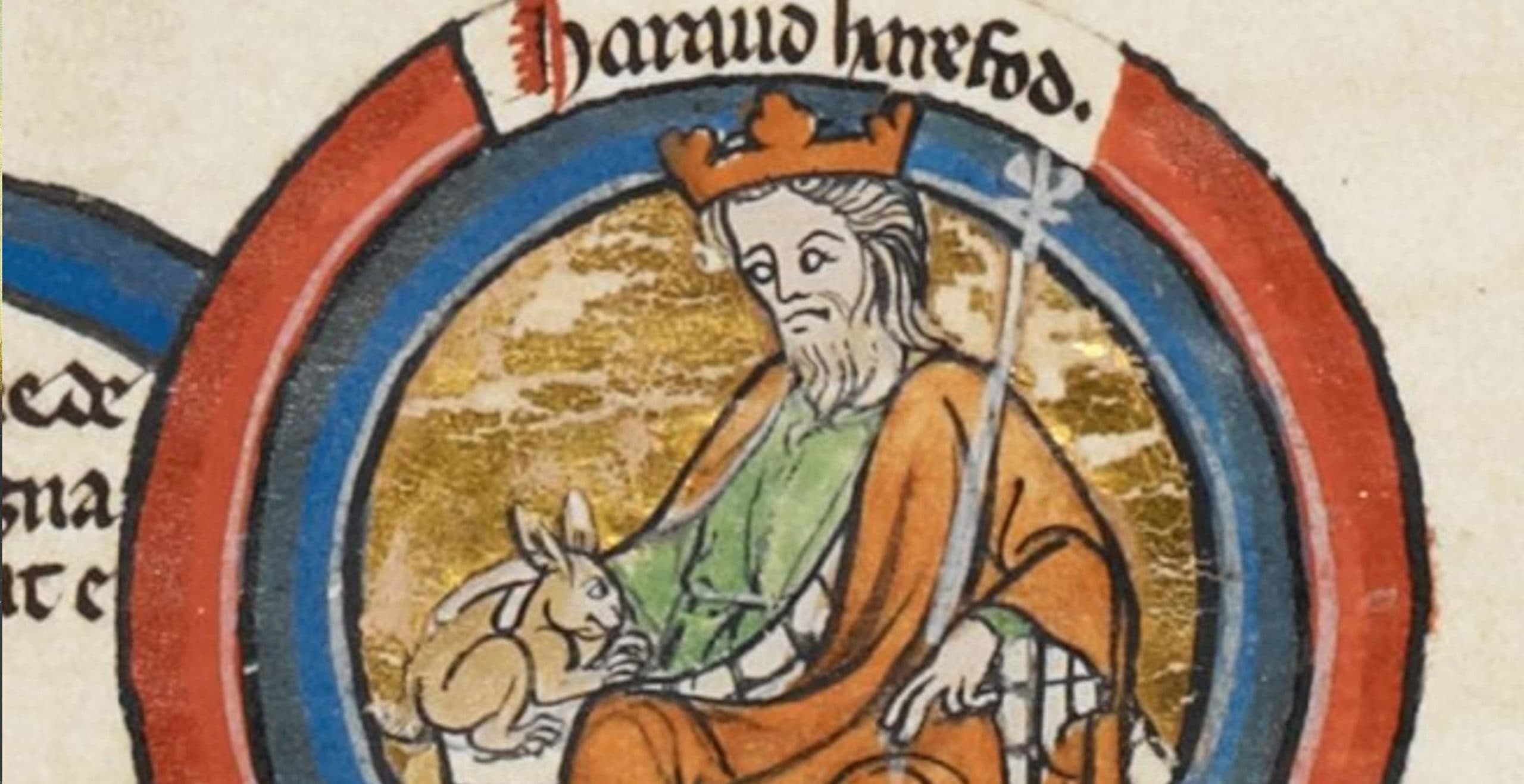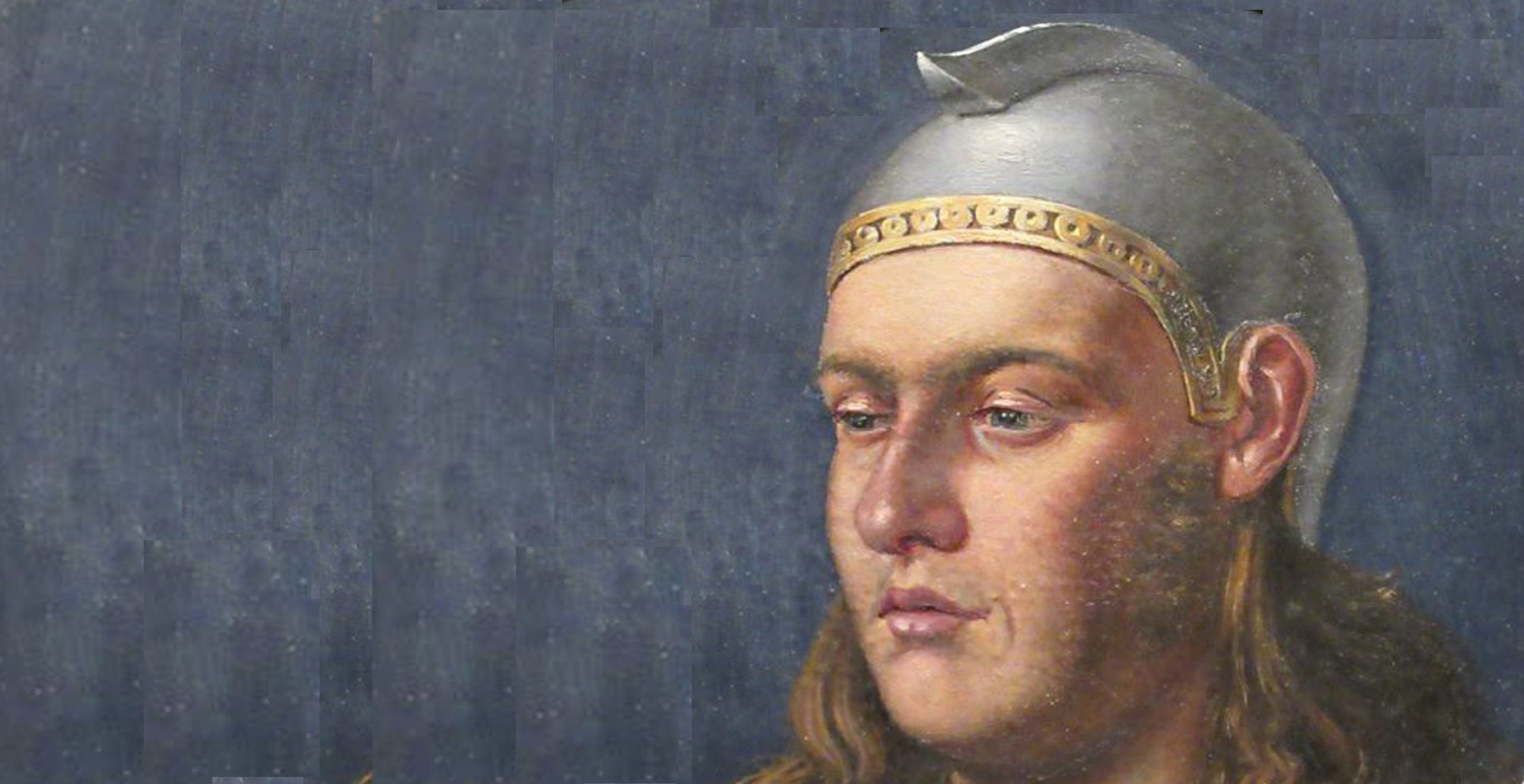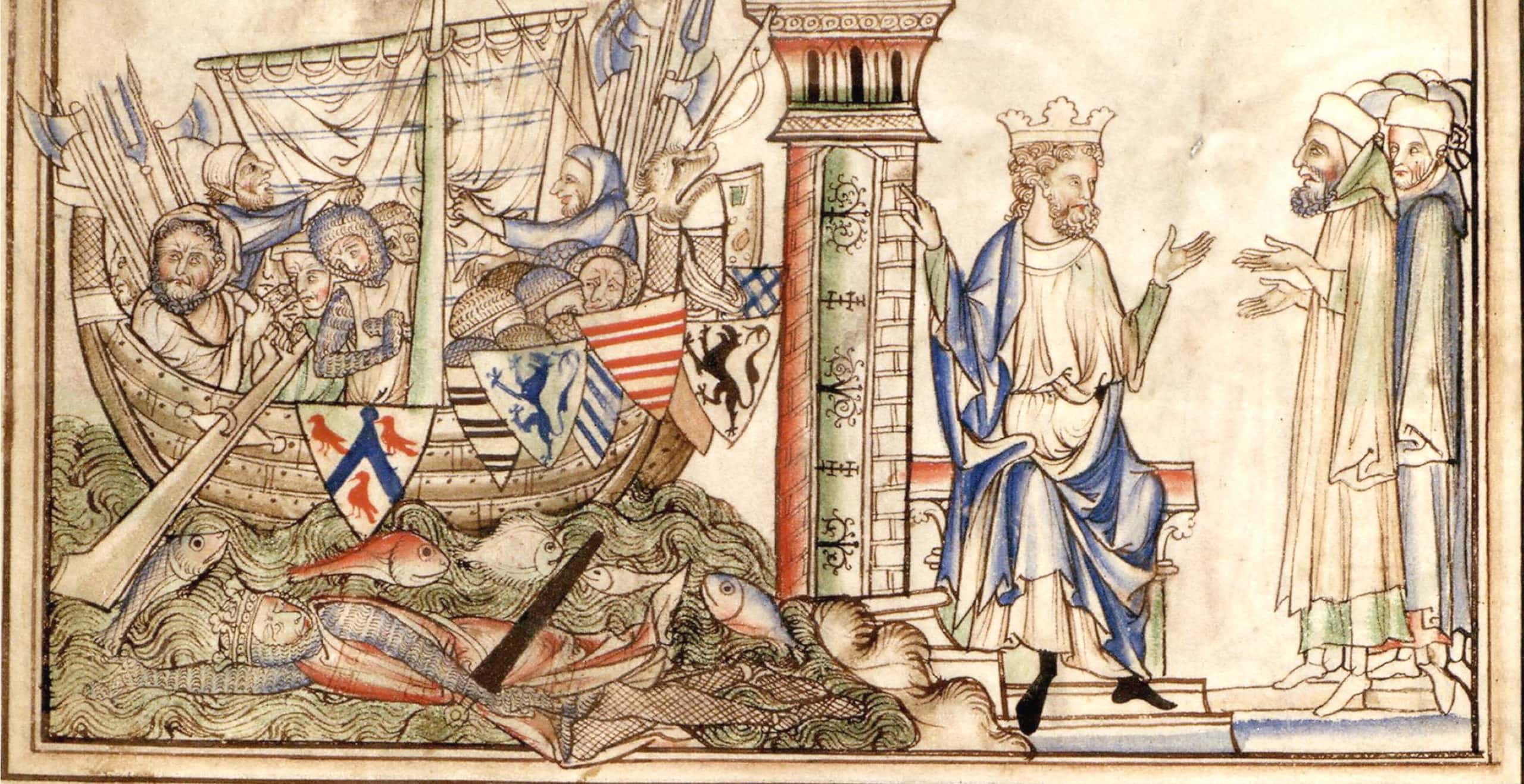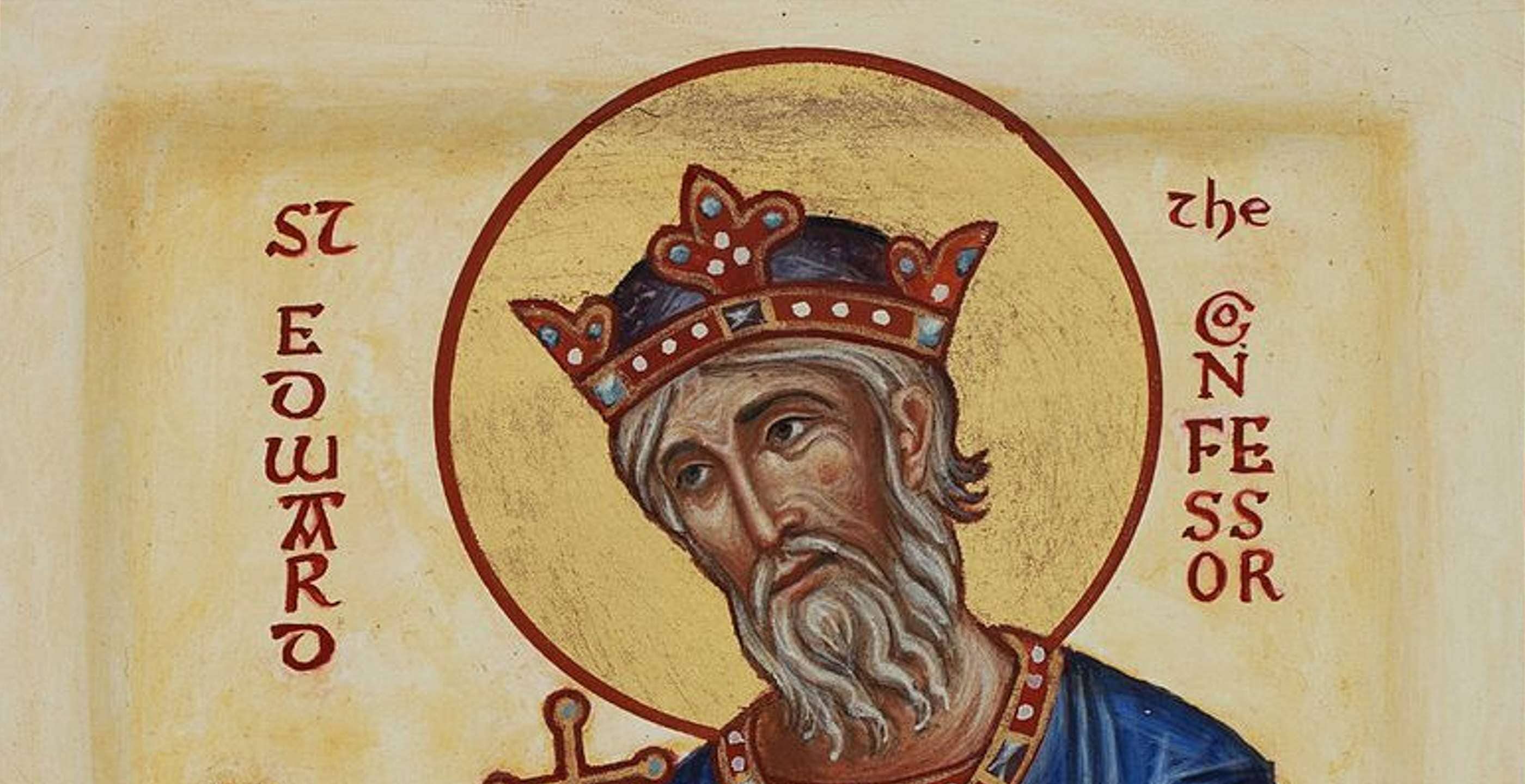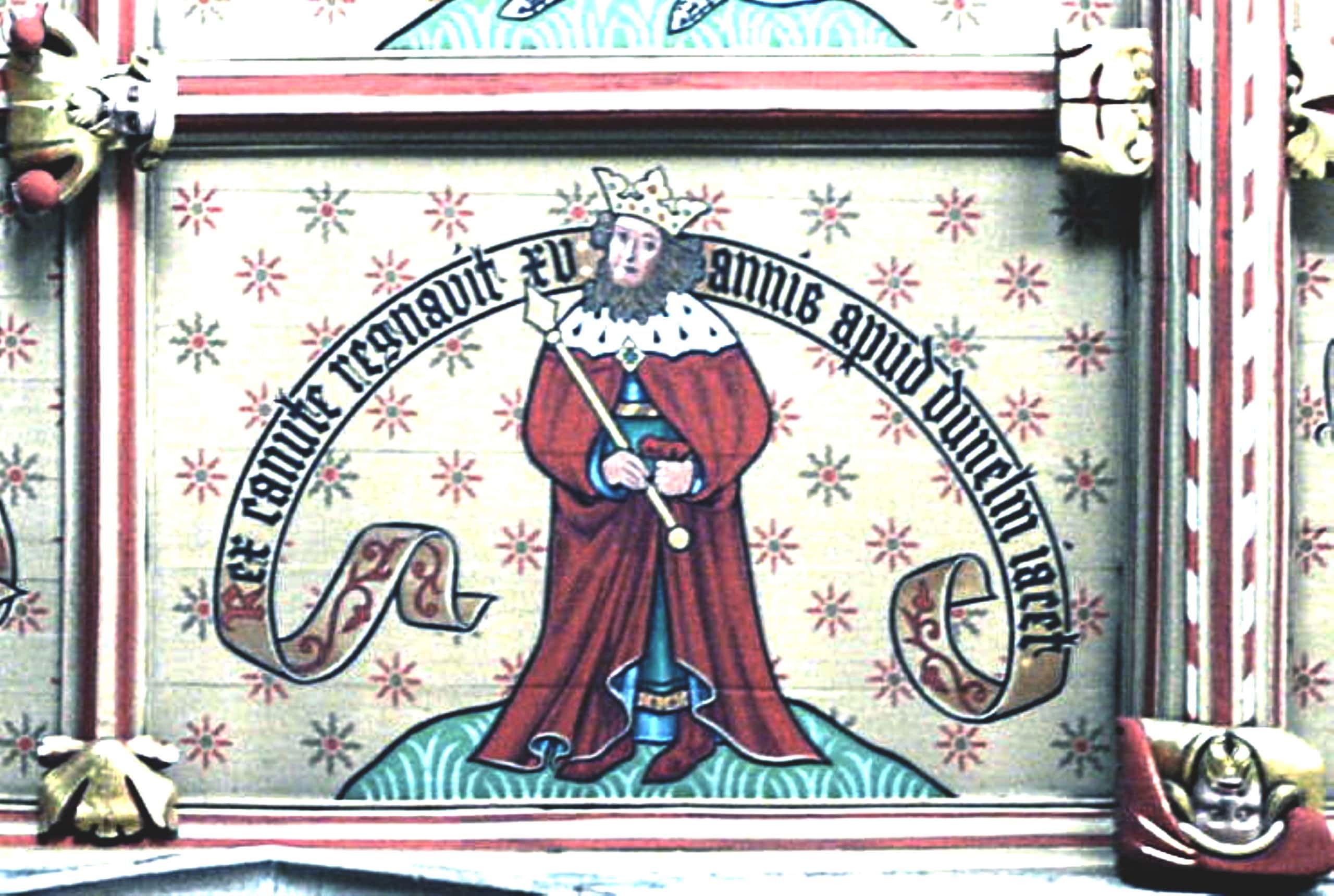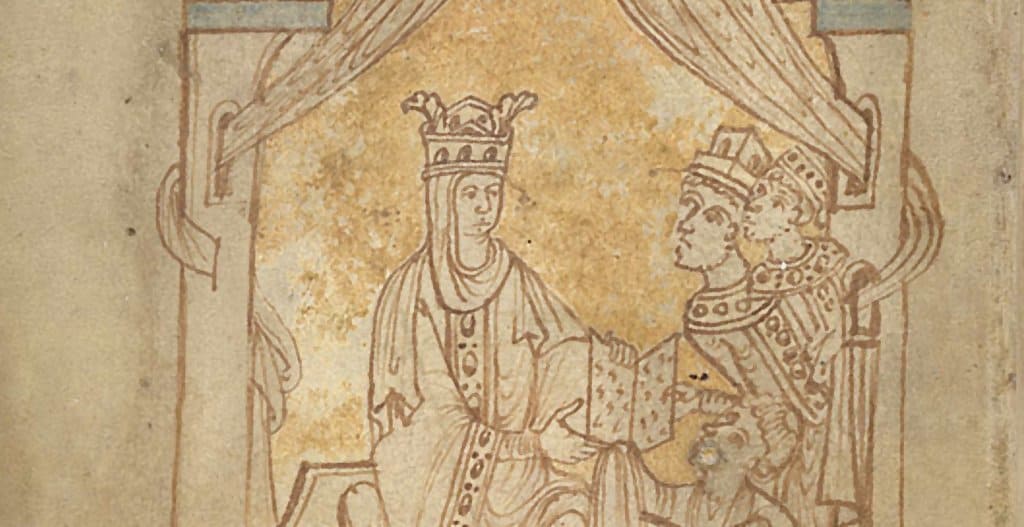King Harold I, otherwise known as Harold Harefoot served as King of England for a short few years, filling in the gap left between his famous father, King Cnut and his younger brother destined to become king, Harthacnut.
When Harold secured the throne for himself in 1035, he spent much of his time in power ensuring that he did not lose the English Crown.
As the son of King Cnut and Aelgifu of Northampton, Harold and his brother Svein looked set to inherit the vast kingdom Cnut was amassing in territory spread across northern Europe.
This however was all about to change when in 1016, after Cnut had successfully conquered England he married Emma of Normandy, the widow of King Aethelred in order to secure his position in the kingdom.
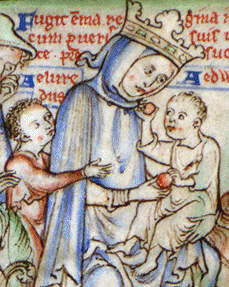
This kind of marriage practice was not uncommon at the time and was seen as socially acceptable to take on a new wife and cast aside the first, particularly when motivated for political reasons.
Cnut and Emma’s union would help to solidify their position and they very quickly went on to have two children, a son called Harthacnut and a daughter called Gunhilda.
Meanwhile, Emma of Normandy already had two sons from her previous marriage to King Aethelred, Alfred Atheling and Edward the Confessor who would spend much of their youth in exile in Normandy.
With the birth of Harthacnut, the two blended families were about to see their succession rights greatly altered, as it was now the destiny of their son Harthacnut to inherit his father’s position.
Harold, the product of Cnut’s first relationship, was bypassed for succession which dealt a great blow to him both personally and professionally. Moreover, Cnut’s new union with Emma also brought two other possible claimants to the English throne into the picture, in the form of her first sons, Alfred and Edward.
Harold would have to bide his time and wait before acting on his impulse to seize the crown for himself.
Meanwhile he would earn himself the nickname, Harold Harefoot in reference to his speed and agility in hunting.
His brother Harthacnut however, was being prepared for the ways of future kingship and spent much of his time in Denmark.
By the time their father passed away in 1035, King Cnut had built an extensive North Sea Empire.
Harthacnut was to inherit his mantle and with it all the problems of kingship. Harthacnut swiftly became King of Denmark, and was immediately faced with problems arising from the threat of Magnus I of Norway. As a result, Harthacnut found himself preoccupied in his Scandinavian domain leaving England’s Crown precariously vulnerable to the political designs of others.
Harold Harefoot rose to the occasion and seized the English Crown whilst Harthacnut remained stuck in Denmark dealing with a rebellion in Norway which had ousted their brother Svein.
Upon his death Cnut had divided his imperial possessions between his three sons, however very quickly Harold seized the opportunity to take possession of his father’s treasure and did so with much needed support from Earl Leofric of Mercia.
Meanwhile, at the Witangemot (great council) in Oxford, Harold was confirmed as King of England in 1035. However he was not without significant opposition. Much to Harold’s dismay, the Archbishop of Canterbury refused to crown him and instead offered to perform the ceremony without the usual royal sceptre and crown. Instead, Ethelnoth, the Archbishop, placed the regalia on the altar of the church and steadfastly refused to have it removed.
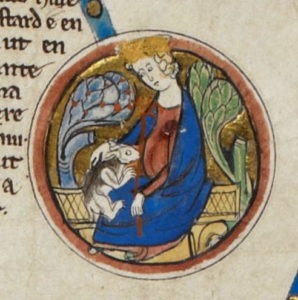
In response to this, Harold denounced the Christian religion entirely and was said to have refused to attend church until he was crowned.
To make matters worse, Emma of Normandy was amassing a strong support base and managed to retain her power in Wessex thanks in large part to the support of the Wessex nobility, particularly Earl Godwin.
Thus Emma acted as regent in Wessex where she fought hard to access the power of the throne for her son and heir.
Moreover, upon hearing the news of Cnut’s death, her two sons from her previous marriage to King Aethelred made their way to England. After amassing a fleet in Normandy, Edward and Alfred sailed to England only to find that support for their arrival was severely lacking as many had resented their father’s reign.
The locals in the town of Southampton launched a protest, forcing the brothers to realise that public sentiment was very much against them, leading them to return to their exile in Normandy.
Meanwhile, their mother was alone in Wessex and their half-brother Harthacnut, who was destined to be King of England, still trapped in Denmark.
This situation thus proved ideal for Harold Harefoot. However his task was far from over as now he had secured the kingship for himself he had a far greater undertaking, holding onto power.
In order to ensure that no other claimants to the throne could destabilise his grip on power, Harold was willing to go to any length possible to make sure this did not happen.
In 1036 Harold chose to first deal with Emma of Normandy’s sons Edward and Alfred and did so using the help of none other than Earl Godwin who had previously pledged his allegiance to Emma.
Upon observing Harold’s assent to power, Godwin switched sides and acted on behalf of the new king. Sadly such a betrayal was about to get even more personal when Emma’s son, Alfred Atheling was murdered.
In 1036, a visit by Alfred and Edward to see their mother in England turned out to be a trap and resulted in Alfred’s death at the hands of Godwin.
Whilst the two brothers should have been under the protection of their brother King Harthacnut, Godwin acted on the orders of Harold Harefoot.
As the two men embarked on their visit to Emma of Normandy in Winchester, Alfred found himself face to face with the Earl Godwin and a group of men who were loyal to Harold.
Upon meeting Alfred, Godwin was said to have feigned his loyalty to the young prince and pledged to find him lodgings and offered to accompany him on his journey.
Now in the hands of the treacherous earl and completely oblivious to his deceit, Alfred and his men carried on with their journey however they were never to arrive at their final destination as Godwin seized him and his men, binding them together and killing almost all of them.
Alfred however was left alive and tied to his horse where he was taken on a boat to the monastery at Ely where he had his eyes gouged out and would later die from his injuries.
The cruel death of Alfred and his brother Edward narrowly escaping such a fate as he fled back to Normandy, showed the brutal tactics Harold was willing to employ to ensure none could usurp him.
Moreover it demonstrated how Anglo-Danish nobility were now allied to Harold’s cause and the likes of Alfred, Edward and Emma were not welcome in such a febrile climate.
By 1037, despite initial opposition from the Archbishop of Canterbury, Harold was accepted as King of England.
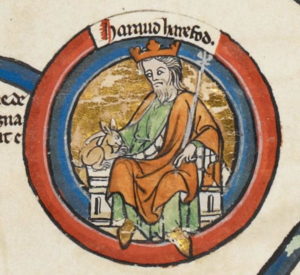
Emma, now in exile on the continent, would meet with her son Harthacnut in Bruges where they would begin to discuss a strategy for removing Harold from the throne.
In the end, Harold’s power proved to be short-lived as he did not live long enough to see Harthacnut launch his invasion.
A few weeks before the planned raid on the English coastline, Harold passed away from a mysterious illness in Oxford on 17th March 1040. He was subsequently buried at Westminster Abbey. However this was not to be his final resting place, as Harthacnut’s arrival in England brought an atmosphere of revenge. He would subsequently order Harold’s body to be exhumed, beheaded and thrown into the River Thames as punishment for ordering the killing of Alfred Atheling.
Harold’s body would later be pulled out of the water and laid to rest in a cemetery in London, bringing to a conclusion a short and embittered battle for power and prestige as the successors and offspring of King Cnut vied for a place in the history books, desperate to escape the shadow cast by the impressive kingship of King Cnut the Great.
Jessica Brain is a freelance writer specialising in history. Based in Kent and a lover of all things historical.
Published: 22nd June 2022
